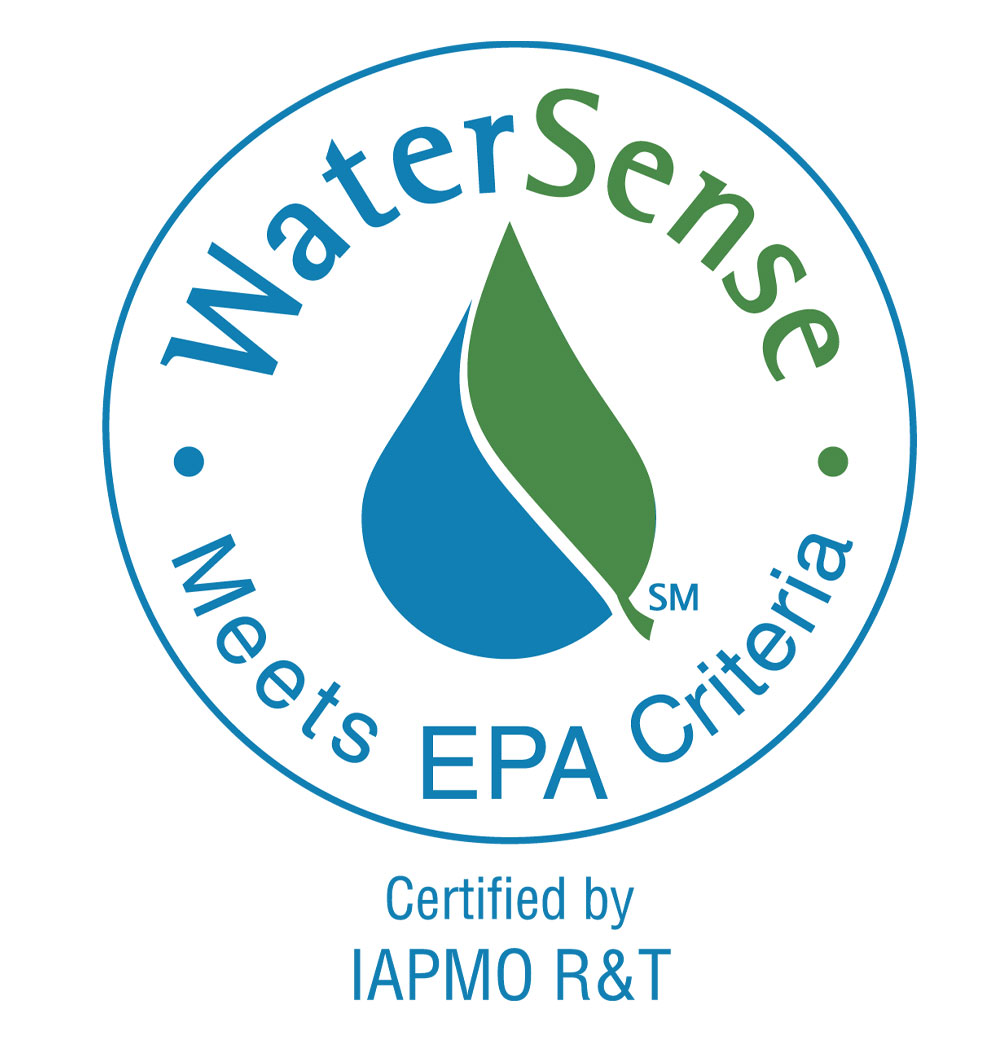Commercial toilets, or flushometer-valve toilets, are typically found in commercial, institutional, or industrial restrooms in such places as airports, theaters, stadiums, schools, and office buildings. These types of toilets have two main components—the toilet bowl and the flushometer valve.
Smart Flushing
WaterSense estimates that there are nearly 27 million flushometer-valve toilets currently installed in the United States. Approximately 26 percent (7 million) of the old toilets have flush volumes as high as 3.0 to 7.0 gallons per flush (gpf)—far more water than the federal standard of 1.6 gpf. With many of these models reaching the end of their useful life, replacing them with even more efficient toilets that have earned the WaterSense label could result in significant water savings.
WaterSense labeled flushometer-valve toilets, whether single- or dual-flush, use no more than 1.28 gpf, which is a 20 percent savings over the federal standard of 1.6 gpf. WaterSense has also included a minimum flush volume of 1.0 gpf to ensure plumbing systems have adequate flow to function effectively.
EPA is labeling flushometer-valve water closets for many reasons. The design of flushometer-valve water closets has improved significantly since the 1990s. Even when various bowls and valves are combined, the performance of many flushometer-valve water closet combinations meets, and often exceeds, the performance of residential water closets. More than 320 high- efficiency flushometer-valve water closet combinations have been tested to Maximum Performance (MaP) testing requirements, which assess advanced performance of plumbing fixtures. In addition, a drainline carry study completed in 2012 by the Plumbing Efficiency Research Coalition (PERC), a collaborative network of six plumbing stakeholders, indicates that drainline blockages are not of significant concern at 1.28-gpf, a potential issue that was previously raised by WaterSense stakeholders.
Whether you are looking to reduce water use in a new facility or replace old, inefficient toilets in commercial restrooms, a WaterSense labeled flushometer-valve toilet is a high-performance, water-efficient option worth considering.
Facility managers should consult a plumbing engineer if they have questions about using WaterSense labeled flushometer-valve toilets in their buildings. Like all WaterSense labeled products, the toilets are also required to be independently certified for performance to ensure they can handle typical commercial waste loads.
WaterSense Savings
By replacing old, inefficient flushometer-valve toilets with WaterSense labeled models, a 10-story office building with 1,000 occupants could save nearly 1.2 million gallons of water and nearly $10,000 per year. Of those savings, nearly 870,000 gallons of water and $7,600 in water costs per year can be achieved by replacing the toilets in the women’s restrooms alone.
If commercial facilities nationwide replaced all their older, inefficient flushometer-valve toilets with WaterSense labeled models, it could save an estimated 39 billion gallons of water per year. That’s equivalent to nearly one full day’s flow of water over Niagara Falls!
Criteria
EPA has also decided to move forward with requiring the full-flush mode of flushometer valves with dual-flush capabilities to meet the maximum allowable flush volume of 1.28 gpf (4.8 Lpf). This approach is different from the WaterSense Specification for Tank-Type Toilets, in which the effective flush volume (i.e., the average of one full and two reduced flushes) must not exceed 1.28 gpf. However, EPA has determined that this approach for flushometer-valve water closets is appropriate for several reasons.
First, the U.S. Department of Energy (DOE) proposed a test method to account for the reduced average water use of a dual-flush water closet in a 2012 Notice of Proposed Rulemaking (NOPR) to amend the test procedures for showerheads, faucets, water closets, urinals, and prerinse spray valves. The test method would have allowed manufacturers to calculate the average representative water use (i.e., the effective flush volume) using the composite average of two reduced flushes and one full flush. Commenters argued against the test method stating that the weighted average approach was unproven, and that the particular ratio required further evaluation to confirm its representativeness. As a result of these and other comments, DOE ruled in 2013 that there was not sufficient evidence to base a test procedure for the average representative water use for dual-flush water closets. In declining to adopt such a test procedure, manufacturers, distributors, retailers, and private labelers are not permitted to make any representations of water use that reflects an average of the full- and reduced-flush modes for dual-flush water closets. Essentially, DOE is prohibiting the use of an effective flush volume to market dual-flush water closets.
Second, in commercial restrooms, water savings from the use of dual-flush flushometer-valve water closets are largely based on user behavior and can be influenced by lack of user education, as well as design considerations (e.g., whether the reduced-flush mode requires the user to pull up or push down on the handle). To date, water savings from dual-flush flushometer-valve water closets has not been fully researched or documented. In a recent study performed at the University of Missouri, one dual-flush flushometer model only yielded a water savings of 12.1 percent, even after educational materials were posted within the stall. EPA reviewed two additional studies mentioned in public comments on the WaterSense Draft Specification for Flushometer-Valve Water Closets: Flush: Examining the Efficacy of Water Conservation in Dual-Flush Toilets and Dual-flush Toilet Project. These studies found full- to reduced-flush volume ratios of 1.6 to 1 and 1.7 to 1, respectively, for dual-flush flushometer-valve water closets in commercial restrooms. 10,11 Neither of these ratios are sufficient to achieve 20 percent savings that is consistent with WaterSense’s goal.
Establishing a 1.28-gpf full-flush maximum for all operating modes of WaterSense labeled flushometer-valve water closets ensures a water savings of at least 20 percent from the current 1.6-gpf maximum regardless of how the fixture is operated. It also eliminates the need for an effective flush volume calculation, which is consistent with DOE’s determination related to dual-flush water closets.
Third, water savings from dual-flush flushometer-valve water closets are primarily limited to female restrooms or other restrooms excluding urinals, as males typically use urinals for liquid waste in commercial restrooms. By instituting a 1.28-gpf full-flush maximum, EPA assures savings from all installations in both women’s and men’s restrooms. EPA intends to impact the market for dual-flush water closets in commercial applications by recognizing those models that are more efficient than conventional products available. It should be noted, however, that with this water efficiency requirement for dual-flush flushometer-valve water closets, EPA is not dictating a maximum flush volume for the reduced flush if it does not exceed the 1.28- gpf maximum established in this specification.
EPA is also instituting a minimum flush volume of 1.0 gpf (3.8 Lpf), which is applicable to all modes of a flushometer-valve water closet, including the reduced flush of a dual-flush flushometer-valve water closet. This minimum is based on information presented in PERC’s second phase of its study of solid waste transport in drainlines. 12 The study indicates that at 1.0 gpf and below, drainline performance becomes chaotic and can result in drainline blockages or performance issues.
General Water Closet Fixture Requirements
The specification requires conformance with the existing, applicable water closet fixture standards, including ASME A112.19.2/CSA B45.1, ASME A112.19.3/CSA B45.4, and CSA B45.5/IAPMO Z124 when tested with a flushometer valve that has the same rated flush volume.
General Flushometer-Valve Requirements
The specification requires conformance with the existing, applicable standard for flushometer valves, ASSE 1037/ASME A112.1037/CSA B125.37. In addition to complying with the ASSE 1037/ASME A112.1037/CSA B125.37, EPA has established two additional requirements for flushometer valves:
• The flushometer valve’s primary actuator must be a non-hold-open design to eliminate the ability to increase the volume of water released to the water closet fixture by holding the actuator open.
• The flushometer valve must not be adjustable as to its rated flush volume beyond a specified tolerance of 10 percent (i.e., ± 0.13 gpf [0.48 Lpf] for a 1.28-gpf flushometer valve) to limit the degree of flush volume adjustment once a flushometer-valve water closet is installed in the field. The 10 percent tolerance in the specification is intended to balance the desire to maintain water consumption and ensure long-term water savings with the need to adjust the flush volume to facilitate maintenance; account for site-specific differences in water pressures; and fine-tune different flushometer-valve and fixture combinations to achieve maximum performance. The 10 percent tolerance was chosen to be consistent with the allowable variance established under the life cycle test criteria within the ASSE 1037/ASME A112.1037/CSA B125.37 standard.
Flush Performance Criteria
The specification requires flush performance of a single-flush flushometer valve or the full-flush mode of a dual-flush flushometer valve to be tested in accordance with the waste extraction test protocol provided in ASME A112.19.2/CSA B45.1. The specification also requires flush performance of the reduced-flush mode of a dual-flush flushometer valve to be tested in accordance with the flush performance test protocol provided in ASME A112.19.14.
Manufacturers that produce toilet fixtures and flushometer valves meeting EPA’s efficiency and performance criteria can apply to have their products certified to earn the WaterSense label. Before submitting products for testing, manufacturers must have a partnership agreement with EPA in place.
Statistics from the US EPA website

Anish Desai
Last modified: July 14, 2023

